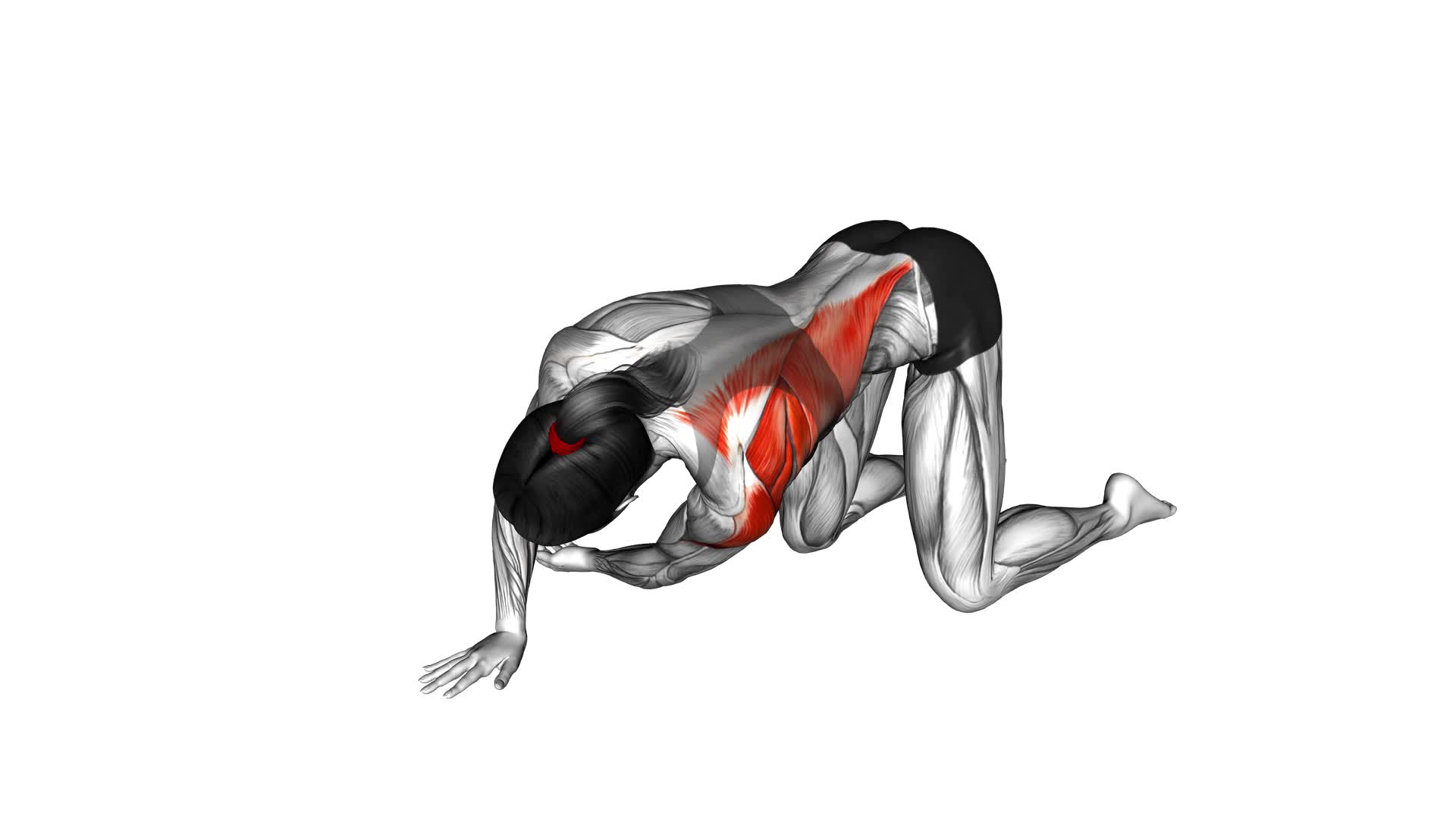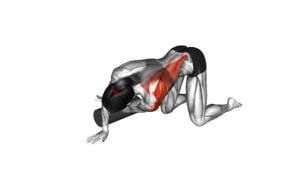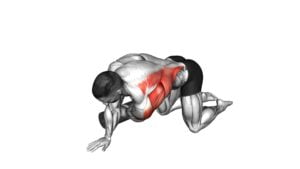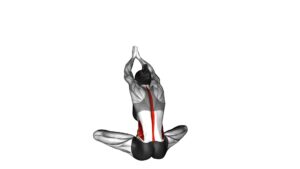Kneeling Upper Back Rotation (female) – Video Exercise Guide & Tips

In this video exercise guide, you'll learn how to perform the kneeling upper back rotation for women. This exercise is designed to target and strengthen your upper back muscles.
Watch This Exercise Video
With proper form and technique, you can increase mobility and flexibility in this area. Watch the video for step-by-step instructions and helpful tips to ensure you get the most out of this exercise.
Let's get started!
Key Takeaways
- Kneeling Upper Back Rotation targets and strengthens the upper back muscles.
- This exercise increases mobility and flexibility in the upper back.
- Proper form and technique are crucial to prevent injury and enhance mobility.
- Spine alignment is important for preventing injury and improving posture.
Benefits of Kneeling Upper Back Rotation
Experience the incredible benefits of kneeling upper back rotation and transform your upper body mobility. This exercise is designed to improve spinal mobility and enhance your posture. By incorporating kneeling upper back rotation into your routine, you can effectively target the muscles in your upper back and shoulders, leading to increased flexibility and range of motion.
One of the primary benefits of this exercise is its ability to improve spinal mobility. As you rotate your upper back while kneeling, you're actively engaging the muscles surrounding your spine. This movement helps to lubricate the joints and increase the flexibility of your spine, allowing for better overall mobility.
Additionally, kneeling upper back rotation can greatly improve your posture. Many individuals struggle with poor posture due to long hours spent sitting or performing repetitive movements. This exercise helps to counteract the negative effects of these activities by strengthening the muscles responsible for maintaining proper alignment. As a result, you'll experience improved posture and reduced strain on your neck and shoulders.
Proper Form and Technique
To perform the kneeling upper back rotation exercise with proper form and technique, it's crucial to focus on spine alignment, engage the correct muscles, and avoid common form mistakes.
Maintaining proper spine alignment ensures effective targeting of the upper back muscles and prevents unnecessary strain on the neck and lower back.
Engaging the muscles of the upper back and core throughout the movement enhances stability and maximizes the benefits of the exercise.
Spine Alignment Importance
Ensure proper spine alignment during the kneeling upper back rotation exercise by maintaining a strong and straight posture throughout. Proper spine alignment is crucial for the effectiveness and safety of any exercise, especially those targeting the upper back.
Here's why spine alignment is important:
- Prevents injury: Correct alignment reduces the risk of strain or injury to the spine, muscles, and surrounding structures.
- Enhances spinal mobility: Maintaining proper alignment allows for better movement and flexibility in the spine, promoting overall spinal health.
- Improves posture: Proper alignment helps to correct postural deviations, such as rounded shoulders or excessive curvature in the upper back, resulting in improved posture and reduced discomfort.
Incorporating exercises for improving posture and spinal mobility, like the kneeling upper back rotation, can help you achieve better alignment and reap the benefits of a strong and healthy spine.
Muscle Engagement Techniques
Maintain proper muscle engagement during the kneeling upper back rotation exercise to maximize its effectiveness and ensure safe execution.
To activate the muscles effectively, start by engaging your core muscles. Draw your navel towards your spine and maintain this contraction throughout the exercise.
Additionally, focus on activating your upper back muscles. As you rotate, initiate the movement from your upper back, rather than relying solely on your arms. This will help to target and strengthen the muscles in your upper back.
Proper body positioning is also crucial for muscle activation. Maintain a neutral spine position throughout the exercise, avoiding excessive rounding or arching. Keep your shoulders relaxed and down, away from your ears.
Common Form Mistakes
Avoid these common form mistakes to ensure proper form and technique during the kneeling upper back rotation exercise. Maintaining correct spinal mobility and shoulder stability is crucial for maximizing the benefits of this exercise.
Here are three common form mistakes to watch out for:
- Rounded upper back: Keep your upper back straight and avoid rounding your shoulders forward. This ensures proper alignment and allows for optimal spinal mobility during the rotation.
- Shrugging shoulders: Avoid lifting your shoulders towards your ears during the exercise. Keep them relaxed and down, maintaining shoulder stability and preventing unnecessary tension.
- Over-rotation: Don't excessively twist your upper body during the rotation. Stay within a comfortable range of motion, focusing on controlled movements to maintain proper form and prevent strain.
Equipment Needed for the Exercise
You'll need a mat and a resistance band for this exercise. The mat will provide cushioning and support for your knees, while the resistance band will add resistance to the movement, targeting the muscles in your upper back and shoulders.
When it comes to beginner modifications, you can start with a lighter resistance band or even no resistance band at all. This will allow you to focus on mastering the movement and ensuring proper form before adding additional resistance. As you become more comfortable and confident with the exercise, you can gradually increase the resistance of the band to challenge your muscles further.
To maximize muscle engagement, it's important to maintain proper form throughout the exercise. Keep your core engaged and your spine neutral. Avoid rounding your shoulders or hunching forward. Instead, focus on maintaining an upright posture and squeezing your shoulder blades together as you rotate your upper back.
Modifications for Beginners
To help beginners ease into the Kneeling Upper Back Rotation exercise, there are simplified modifications that can be implemented.
These modifications focus on gradually building strength and flexibility in the upper back muscles.
Simplified Beginner Modifications
For beginners, try these simplified modifications to improve your kneeling upper back rotation:
- Start with a smaller range of motion: Instead of rotating your upper back as far as possible, begin by rotating only a few degrees to each side. This will help you build strength and flexibility gradually.
- Use a prop for support: Place a yoga block or cushion under your knees to provide extra stability and support. This will help you maintain proper alignment and prevent strain on your joints.
- Focus on proper form: Pay attention to your posture and make sure your spine is straight throughout the exercise. Engage your core muscles to support your back and maintain stability.
By incorporating these beginner modifications and practicing regularly, you'll gradually improve your kneeling upper back rotation.
Now, let's move on to the next section to learn about gradual progression for beginners.
Gradual Progression for Beginners
As you progress from the simplified beginner modifications, the gradual progression for beginners focuses on building strength and flexibility in your kneeling upper back rotation. These gradual progression techniques are designed to help you advance your skills and improve your overall performance in this exercise.
One effective beginner modification is to start with a smaller range of motion, gradually increasing it as you become more comfortable and confident.
Another modification is to use a lighter resistance band or no resistance at all, allowing your muscles to adapt and gradually increase in strength.
Additionally, you can incorporate a slower tempo, focusing on controlled movements and proper form.
These modifications will help you gradually build the necessary strength and flexibility to perform the kneeling upper back rotation with ease and efficiency.
Common Mistakes to Avoid
Avoid excessive twisting or jerking movements when performing the kneeling upper back rotation exercise. These movements can put strain on your back and increase the risk of injury.
To ensure a safe and effective workout, follow these tips:
- Maintain proper form: Keep your back straight and your core engaged throughout the exercise. This will help stabilize your spine and prevent unnecessary strain on your back muscles.
- Use controlled movements: Avoid sudden, jerky movements when rotating your upper back. Instead, focus on smooth and controlled rotations, allowing your muscles to work in a controlled manner.
- Breathe properly: It's important to maintain proper breathing techniques during the exercise. Inhale deeply before starting the rotation and exhale as you rotate your upper back. This will help oxygenate your muscles and promote relaxation.
Tips for Maximizing the Exercise's Effectiveness
To maximize the effectiveness of the kneeling upper back rotation exercise, it's important to focus on proper form and engage your core throughout the movement. By doing so, you can ensure that you're targeting the intended muscles and maximizing your results.
First and foremost, maintaining proper form is crucial. Start by kneeling on all fours with your hands directly under your shoulders and your knees directly under your hips. Keep your back straight and your core engaged throughout the exercise. As you rotate, be sure to move from your upper back, rather than relying on your arms or shoulders to do the work. This will help isolate the muscles in your upper back and increase the effectiveness of the exercise.
Additionally, engaging your core throughout the movement will further enhance the effectiveness of the exercise. By keeping your core muscles activated, you provide stability and support to your spine, allowing for a controlled and efficient rotation. This won't only maximize the results of the exercise but also help prevent any unnecessary strain or injury.
Lastly, consider incorporating exercise variations to challenge your muscles in different ways. You can try using resistance bands or weights to increase the intensity of the exercise. Alternatively, you can perform the rotation on an unstable surface, such as a stability ball, to engage your core even more. These variations can help keep your workouts interesting and ensure continual progress.
Frequently Asked Questions
How Many Sets and Reps Should I Do for the Kneeling Upper Back Rotation Exercise?
To determine the number of sets and reps for the kneeling upper back rotation exercise, consider your fitness level and goals.
For beginners, start with 2-3 sets of 10-12 reps. As you progress, increase the sets and reps gradually.
This exercise helps improve upper back mobility and core stability. Rotational exercises like this target multiple muscle groups, enhancing overall strength and flexibility.
Incorporating them into your workout routine can lead to better posture and reduced risk of injury.
Can This Exercise Help Improve Posture?
This exercise can be beneficial for improving posture. By engaging the muscles in your upper back, it helps to strengthen and stabilize the area, promoting better alignment.
The rotational movement targets the thoracic spine, which is often tight and restricted due to poor posture. Regularly performing this exercise can help increase mobility and flexibility in the upper back, resulting in improved posture and reduced discomfort.
Incorporating it into your routine can have long-term benefits for your overall posture.
Is It Safe to Perform the Kneeling Upper Back Rotation Exercise if I Have a History of Back Pain?
If you have a history of back pain, it's important to take back pain precautions when considering the kneeling upper back rotation exercise.
This exercise involves rotating the upper back while kneeling, which may put strain on your back if it's already injured.
It's recommended to consult with a healthcare professional or a certified trainer to determine if alternative exercises would be more suitable for your condition.
Can I Use Weights or Resistance Bands to Increase the Intensity of This Exercise?
Using weights or resistance bands can help increase the intensity of the kneeling upper back rotation exercise. Adding resistance challenges your muscles and promotes strength gains in your upper back.
Resistance bands offer the advantage of providing constant tension throughout the movement, activating more muscle fibers. This can improve your posture, enhance shoulder stability, and reduce the risk of injury.
Be sure to start with lighter weights or resistance bands and gradually increase the load as your strength improves.
How Often Should I Incorporate the Kneeling Upper Back Rotation Exercise Into My Workout Routine for Optimal Results?
To maximize results, incorporate the kneeling upper back rotation exercise into your workout routine regularly. The frequency of this exercise depends on your fitness goals and current level of strength. However, performing it 2-3 times a week is a good starting point.
By including this exercise, you can benefit from improved upper back mobility, enhanced posture, and increased core stability.
Remember to always consult with a fitness professional before starting any new exercise routine.
Conclusion
In conclusion, the kneeling upper back rotation exercise is a beneficial way to improve flexibility and mobility in the upper back region. By following proper form and technique, utilizing the necessary equipment, and making modifications for beginners, individuals can maximize the effectiveness of this exercise.
It's important to avoid common mistakes and implement tips for optimal results. Incorporating this exercise into your fitness routine can help you achieve a stronger and more flexible upper back.

Author
Years ago, the spark of my life’s passion ignited in my mind the moment I stepped into the local gym for the first time. The inaugural bead of perspiration, the initial endeavor, the very first surge of endorphins, and a sense of pride that washed over me post-workout marked the beginning of my deep-seated interest in strength sports, fitness, and sports nutrition. This very curiosity blossomed rapidly into a profound fascination, propelling me to earn a Master’s degree in Physical Education from the Academy of Physical Education in Krakow, followed by a Sports Manager diploma from the Jagiellonian University. My journey of growth led me to gain more specialized qualifications, such as being a certified personal trainer with a focus on sports dietetics, a lifeguard, and an instructor for wellness and corrective gymnastics. Theoretical knowledge paired seamlessly with practical experience, reinforcing my belief that the transformation of individuals under my guidance was also a reflection of my personal growth. This belief holds true even today. Each day, I strive to push the boundaries and explore new realms. These realms gently elevate me to greater heights. The unique combination of passion for my field and the continuous quest for growth fuels my drive to break new ground.







